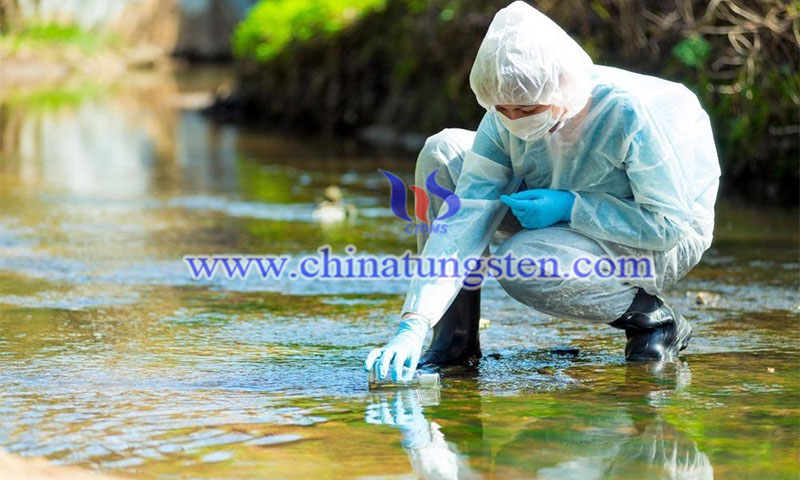Controlling Environmental Pollutants with Mo-Based Catalysts
- Details
- Category: Tungsten's News
- Published on Tuesday, 09 November 2021 20:23
A recent review published in the journal EcoMat highlights a number of new developments in the use of Mo-based catalysts for better control of water and air pollutants, while also exploring a range of approaches that have the potential to optimize Mo-based materials and use them as efficient catalysts.
Air and water pollution puts vital ecosystems, food chains and the environment necessary for human life at risk, making it one of the most pressing global environmental issues. Water pollution often comes from heavy metal ions, hard-to-degrade organic pollutants and bacteria - toxic and harmful contaminants from industrial and wastewater treatment processes that do not break down naturally. The problem is compounded by eutrophication of water bodies, which can lead to favorable conditions for massive bacterial blooms that further pollute and adversely affect water quality.
Air pollution consists primarily of volatile organic compounds (VOCs), nitrogen oxides (NOx), sulfur oxides (SOx), and carbon dioxide (CO2), pollutants that originate primarily from the combustion of fossil fuels. The impact of CO2 as a greenhouse gas has been widely documented, and large amounts of CO2 have a substantial impact on the Earth's climate.
A range of technologies and approaches have been developed to address these issues, including activated carbon adsorption, ultrafiltration, and advanced oxidation processes (AOPs) designed to address water pollution; and thermal, photocatalytic and electrocatalytic technologies that are often used in the ongoing fight against air pollution.

Catalysts are at the heart of many of these methods and technologies, and molybdenum-based catalysts such as molybdenum disulfide (MoS2), molybdenum dioxide (MoO2), molybdenum trioxide (MoO3), molybdenum carbide (MoCx), and molybdenum powder have been used extensively over the past few decades.
Molybdenum-based materials offer excellent potential for water pollution control and are routinely used as advanced catalysts and co-catalysts in AOPs. These materials are also key to many Fenton or Fenton-like reactions, and the unique properties of materials including MoS2, MoO2 and molybdenum powder are used to support processes such as contaminant degradation, disinfection and the reduction of heavy metal ions.
Most notably, molybdenum-based catalysts offer a promising means of addressing the risks posed by metallurgical wastewaters, which often include large amounts of extremely toxic, high-valent metal ions. These ions cause significant harm to human health and can damage local ecosystems, hence the need to develop and implement robust, reliable and efficient catalysts capable of effectively removing heavy metal ions.
Mo-based catalysts offer a potential solution to this contamination by supporting and enabling reactions and processes such as physical adsorption, chemical redox reactions and photocatalytic reactions that are capable of removing heavy metals and rendering them harmless. Molybdenum-based catalysts have been widely used to support the development of nitrogen oxide reduction with ammonia, as well as carbon dioxide conversion through the application of thermal, photocatalysis and electrocatalysis.
MoO3 is also central to the promotion and stabilization of industrial NH3-SCR catalysts V2O5-MoO3(WO3)/TiO2, while many advances have been made in the use of Mo-based molecular sieves due to the low toxicity, lowest cost and large specific surface area of Mo.
Reducing CO2 production is critical to solving air pollution problems, and Mo-based catalysts offer excellent potential in a range of CO2 conversion technologies.
For example, MoS2 can be used for CO2 electrochemical reduction and photoreduction, while MoCx has good potential for CO2 hydroelectric power generation and conversion of CO2 into useful fuel products.
The primary drawback of many molybdenum-based materials comes from limitations around cost and capacity, which means that many of these very beneficial materials can only be used in small-scale or laboratory applications.
To fully realize their potential to help address air and water pollution on a global scale, it is necessary to mature these systems into viable industrial scale applications. Scaling up and optimization of these catalysts will be key to achieving their widespread use.
As technology advances and their applications become increasingly integrated into common industrial processes, the highly beneficial and promising properties of Mo-based catalysts are prompting increasing research into their use in controlling a number of environmental pollutants; research that will lead to their further and wider adoption.
| Molybdenum Supplier: Chinatungsten Online www.molybdenum.com.cn | Tel.: 86 592 5129696; Fax: 86 592 5129797;Email:sales@chinatungsten.com |
| Tungsten News & Prices, 3G Version: http://3g.chinatungsten.com | Molybdenum News & Molybdenum Price: http://news.molybdenum.com.cn |



 sales@chinatungsten.com
sales@chinatungsten.com